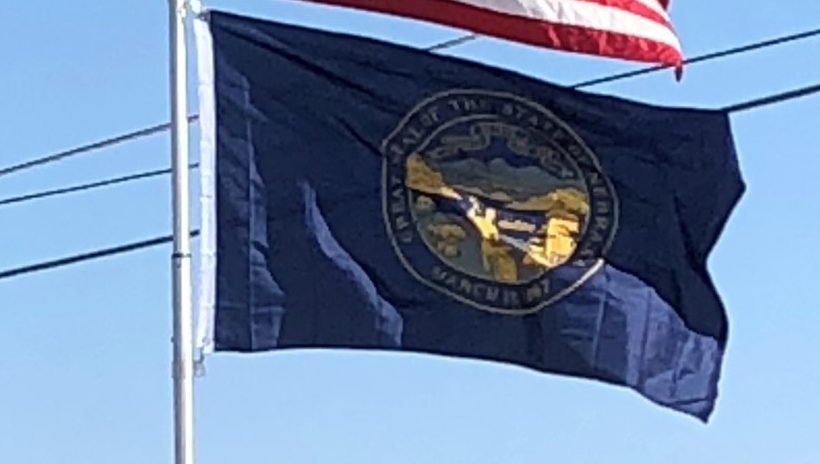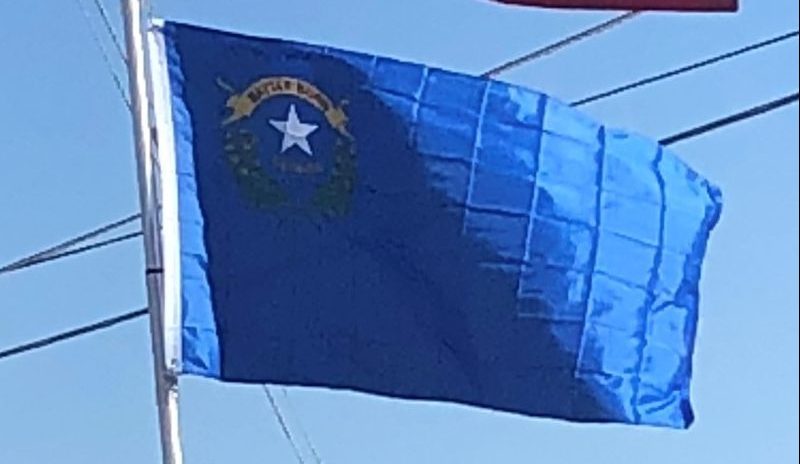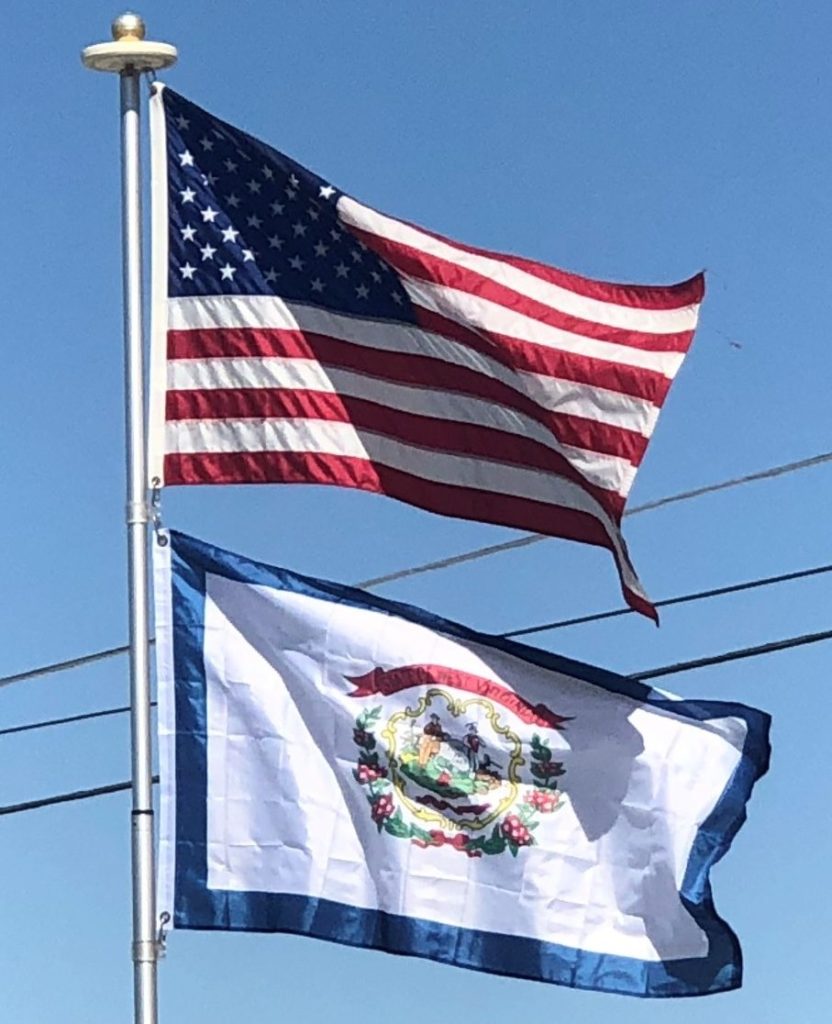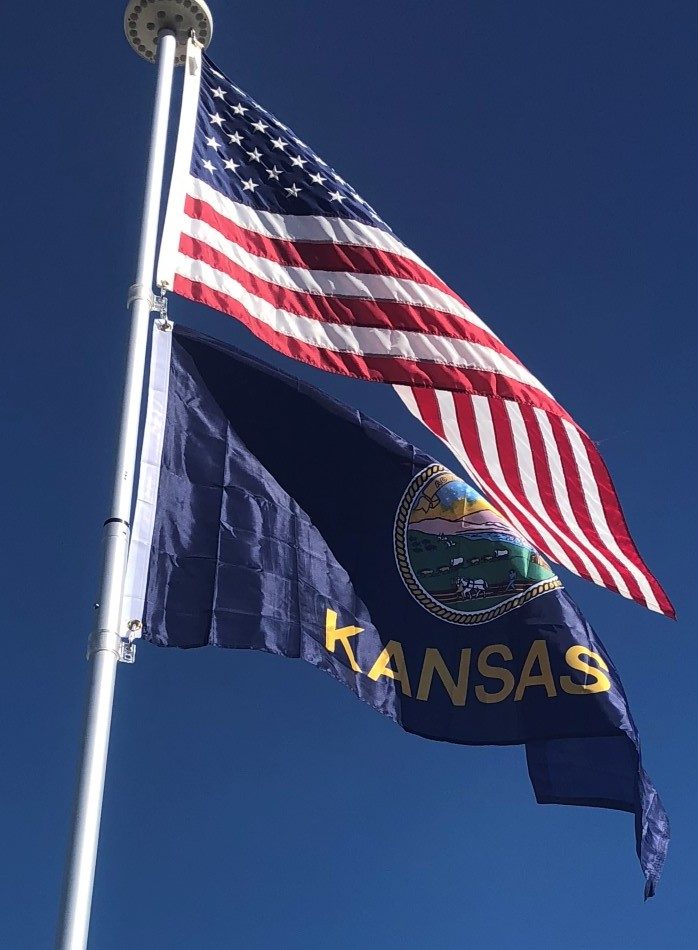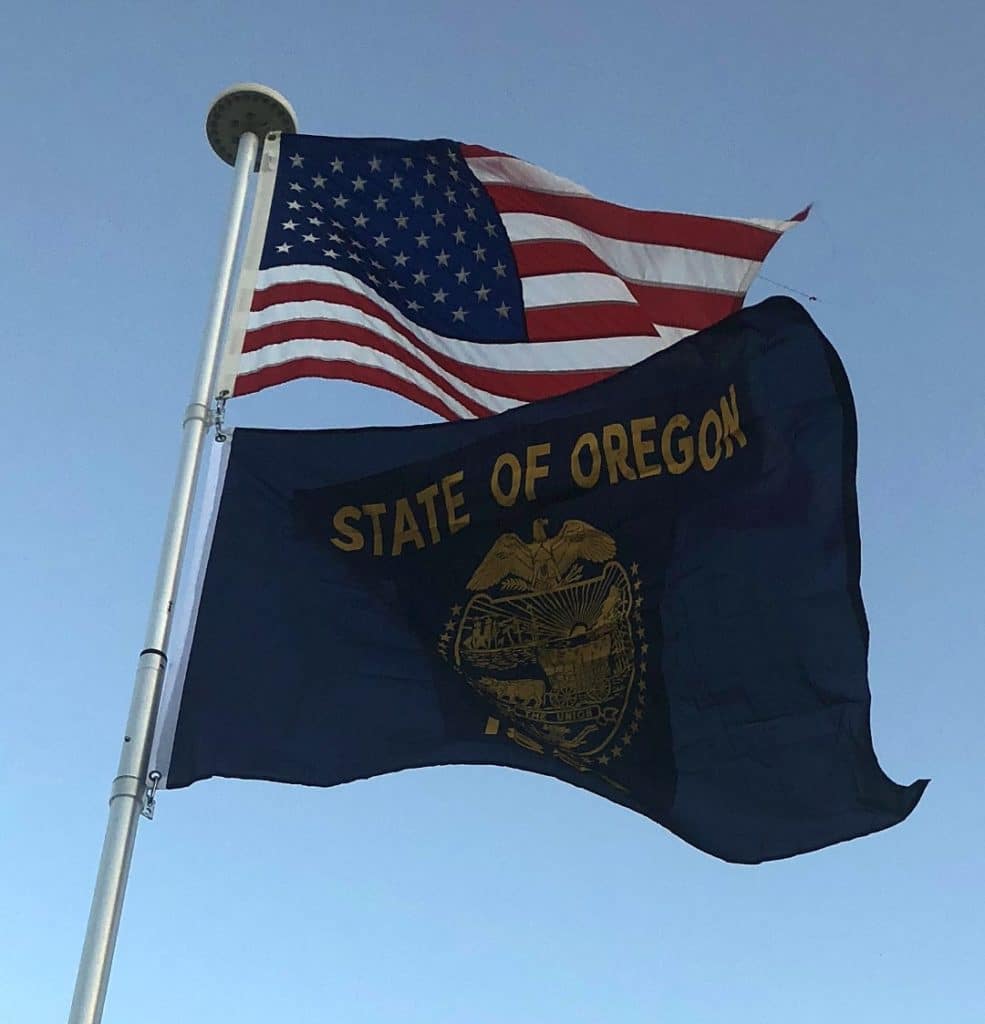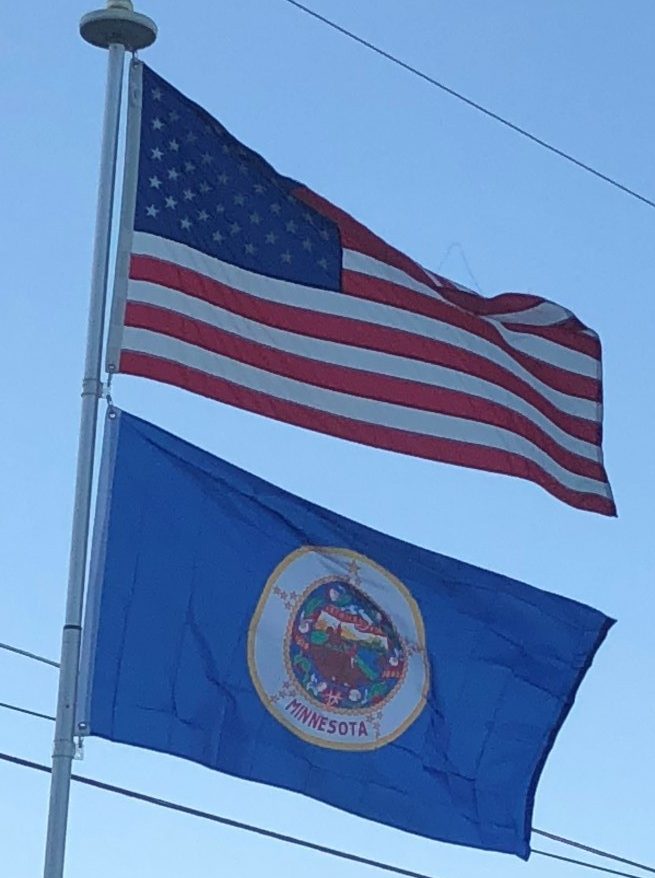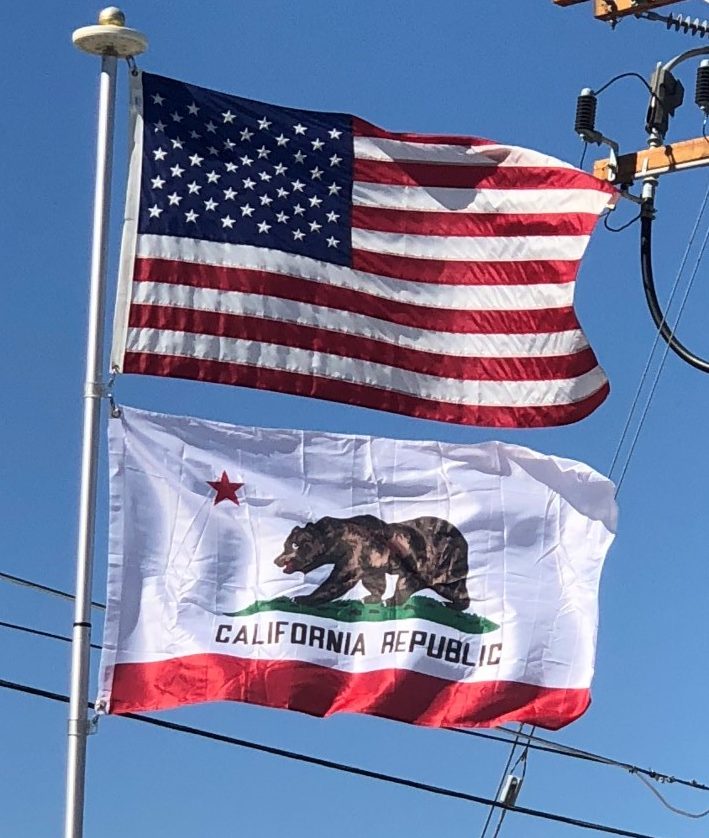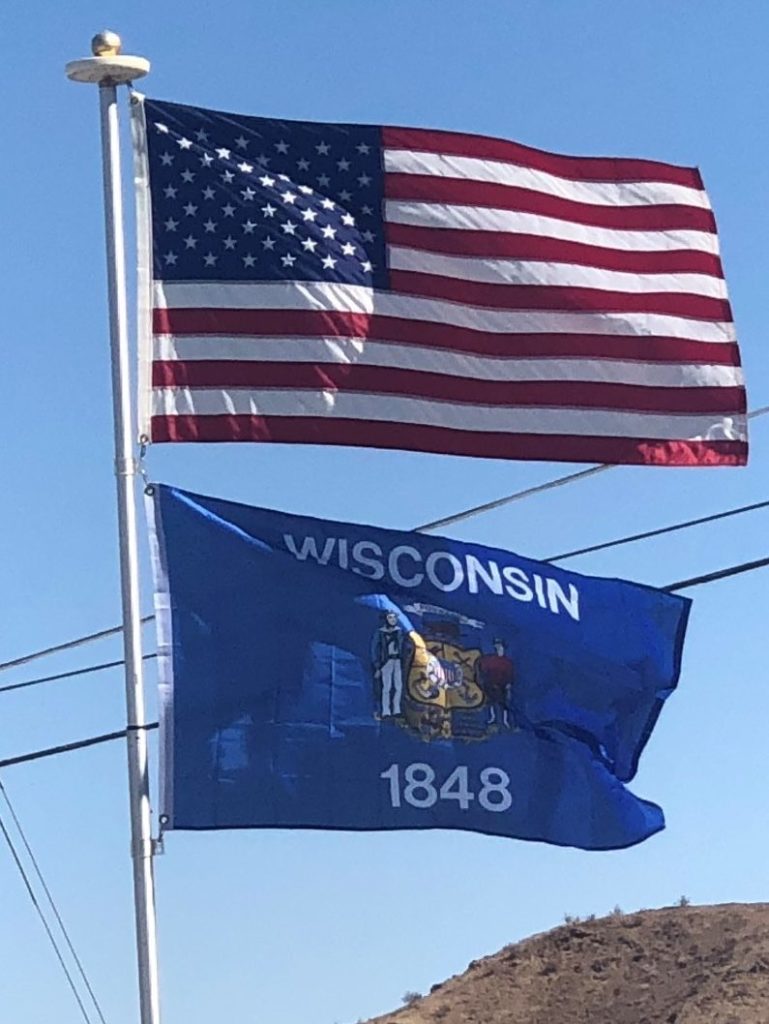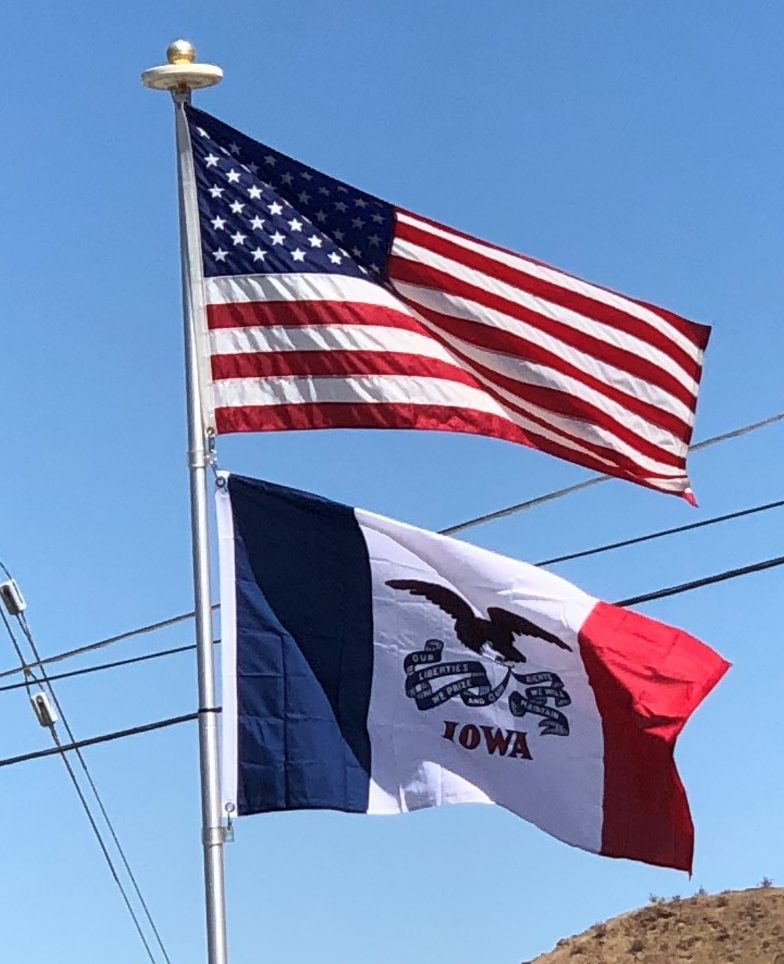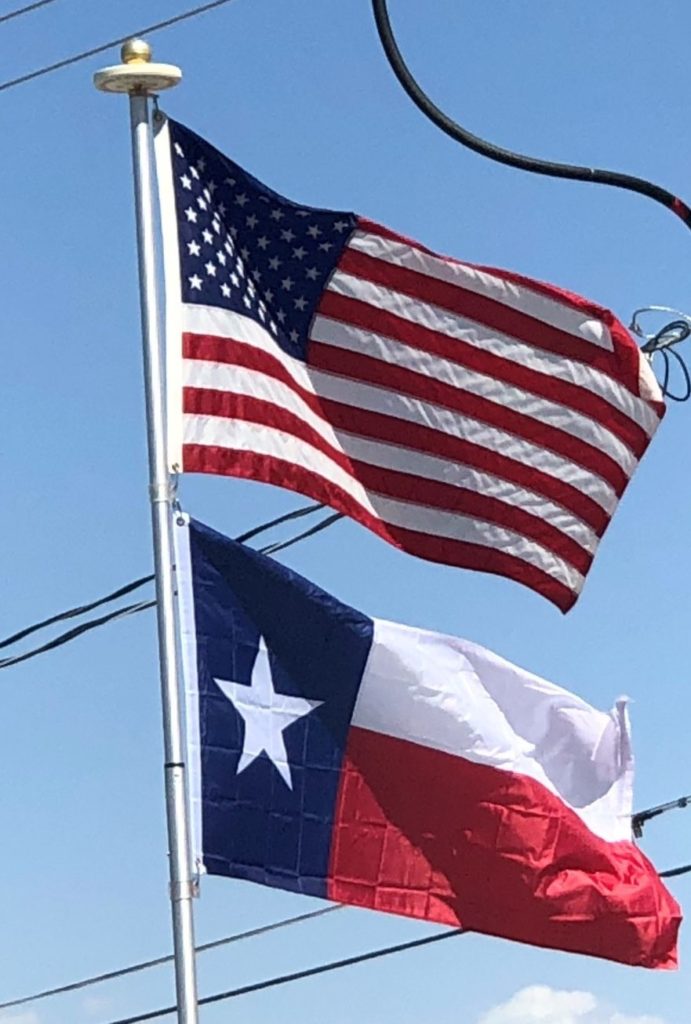Nebraska – The Cornhusker State
The flag of the state of Nebraska is a blue rectangular cloth charged with the Nebraskan state seal. The current design was commissioned in 1925, when a bill was passed that the flag would have the Nebraska state seal in gold and silver on a field of national blue.
The seal is the same seal as originally designed in 1867; however, there were bills introduced to change the seal. The most spoken about attempted change of the state seal was created by the architect of the Nebraska State Capitol, Bertram Goodhue, but it failed to pass the legislature. The official designation of the design as the state flag occurred in 1963; Nebraska was one of the last states to adopt an official flag.
